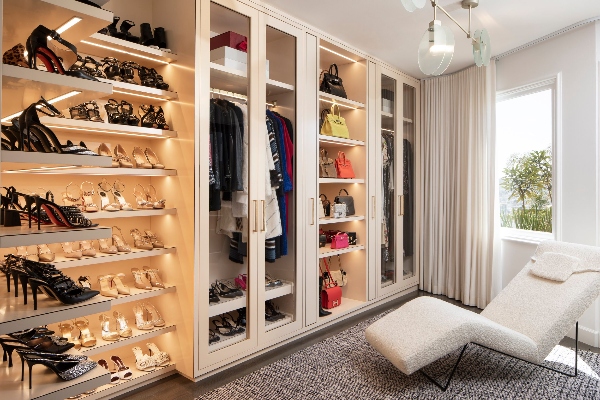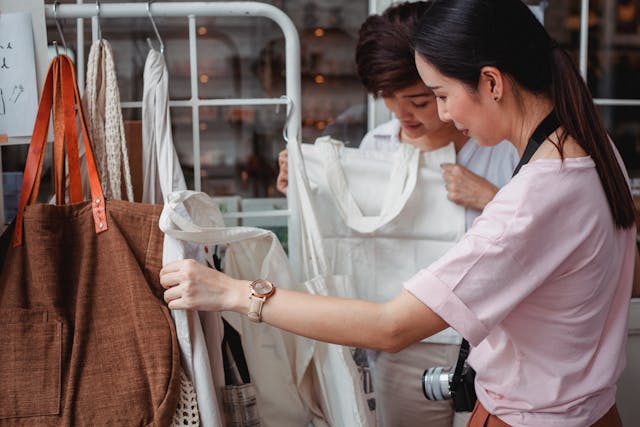Fashion
Is Your Closet Killing the Planet? How to Break Up with Fast Fashion for Good

In a time when environmental concerns are more pressing than ever, our shopping habits hold the key to a more sustainable future.
The fashion industry, one of the largest polluters on Earth, is under scrutiny for its practices that harm the planet and affect its workers. Breaking up with fast fashion is not just about changing how we shop; it’s about reshaping our values and understanding the impact of our choices. Keep reading to learn practical steps to make your fashion choices more sustainable so you can look good while doing good.
Understanding Fast Fashion’s Impact

Fast fashion is the mass production of cheap, disposable clothing. Countless new collections per year make us feel constantly out of date and encourage a throw-away culture. This practice not only wastes valuable resources but also results in tremendous textile waste. The fast fashion model thrives on the exploitation of labor and environmental regulations that are all too often insufficient. By understanding these impacts, we can start to make informed decisions about how we choose to spend our money.
Identifying Sustainable Brands
Transitioning away from fast fashion starts with identifying and supporting brands that prioritize sustainability in their practices. Look for companies that use organic or recycled materials, offer fair wages, and have transparent supply chains. It’s important to support brands that not only talk about sustainability but also walk the walk, showing genuine commitment through certified measures and real actions.
A significant step in this direction is learning to recognize greenwashing—claims that may sound eco-friendly but are merely marketing tactics without substantial practices to back them up. Fast fashion needs a cure, and that cure begins with educating ourselves about what true sustainability looks like in the fashion industry.
The Importance of Quality Over Quantity
One of the most straightforward ways to combat the rise of fast fashion is to buy less but buy better. Investing in quality garments that will last longer is not only more economical in the long run but also less taxing on the planet. High-quality clothes can often be repaired and maintained for years, unlike cheaper, poorly made items that might not survive a few washes.
Encourage the habit of buying timeless pieces that offer versatility and longevity. A well-curated wardrobe should consist of items that you love and that last, reducing the need for constant new purchases. This practice not only helps minimize waste and resource use but also cultivates a personal style that transcends seasonal trends.
The Value of Investing in Designer Fashion
While the initial cost may be higher, investing in designer fashion can lead to more sustainable wardrobe choices. High-quality designer items, such as tailored blazers, handcrafted shoes, and intricate dresses, are made with superior materials and attention to detail. These pieces are not only designed to look timeless but also to endure through seasons and trends, reducing the need to buy new items frequently.
Designer fashion often uses materials that are sourced and produced with sustainability in mind, such as organic cotton, ethically sourced wool, and recycled fabrics. By purchasing these items, you are not only investing in your wardrobe but also in practices that support environmental stewardship. Consider the classic elegance of designer jumpsuits that will last a lifetime with proper care—these are purchases that encapsulate both style and sustainability.
Embracing Second-Hand and Vintage Fashion
One of the most effective ways to counteract the cycle of fast fashion is by shopping second-hand and vintage. Thrift stores, vintage shops, and online platforms offer unique opportunities to find one-of-a-kind pieces that add character and history to your wardrobe without additional environmental cost.
Shopping second-hand not only prolongs the life cycle of clothing but also significantly reduces your carbon footprint. It diminishes the demand for new resources and offers a creative approach to fashion. You can mix and match styles from different eras to create a truly eclectic style that reflects your personality and values. Embrace the adventure that comes with hunting for vintage treasures and consider the stories behind older garments as an added layer of value.
Supporting Local and Ethical Fashion Initiatives

Another key strategy in sustainable shopping is supporting local and ethical fashion initiatives. By choosing to buy from local designers and boutiques, you can help reduce the carbon emissions associated with shipping and promote smaller businesses that often pay closer attention to ethical production practices.
Many local brands are committed to sustainable methods and are more likely to ensure fair labor conditions and lower environmental impact. They often provide transparency about their manufacturing processes and source materials locally, which helps strengthen community economies and reduces overall environmental degradation.
The change toward a more ethical industry is a collective effort, and every small step counts. Let’s commit to being part of the solution, reshaping our consumption habits, and fostering a culture that values sustainability as much as style. Together, we can ensure that our fashion choices are not just good for us but also good for our planet.










